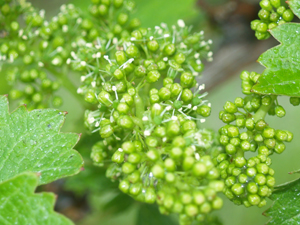The flowering period is one of the growth stages of the vine life cycle and marks the start of the formation of the grapes. After the winter rest period, the vines start to come back to life as the soil starts to warm again in March, and the sap starts to flow again in the vines. In April the buds start to appear on the branches and then burst to make way for the leaves to start unfurling.
The leaves and branches continue to develop into May, and you can start to see the structure of the future bunches to form. Small tight green clusters that look like buttons appear on the tips of the young shoots. Each of the flower buttons has a cap of petals known as the calyptra to protect the reproductive organs inside.

And that is where the difficulty lies. As a general rule of thumb, flowering happens eight weeks after bud burst and lasts between 8 and 15 days. If the weather is mixed it can take longer than if it is hot and sunny. It normally happens around June, when the weather can be variable, and so the results can be mixed.
If it rains a lot or the temperatures are cool, the floral caps aren’t able to detach themselves properly, and the fecundation can’t take place, which means no fruit to harvest in the autumn. That is known as coulure, and the flower dries up without having been pollinated.
Flowering can be more or less marked depending on the region, and the grape varietal. You can tell that the vine has been well fecundated when the grapes that form a few days later are all of the same size.
Traditionally you count 100 days from the flowering period to the start of the harvest. We should shortly have a good indication of when the 2018 harvest will be!
Comments
No comments.




